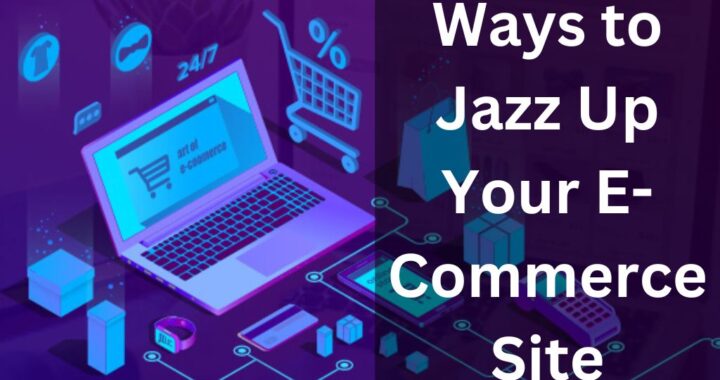How to Get Started With ERP eCommerce Integration?

Planning for possible obstacles should be part of the process of creating an ERP eCommerce B2B strategy. Detours are commonplace on the route to our destination. Nonetheless, a handful of obstacles are so significant that they can put the journey to a complete stop. ERP B2B integration is vital to developing an eCommerce deployment that if it isn’t done correctly, it may cause the whole project to be sidetracked completely. To avoid integration issues, it is essential to properly prepare for ERP integration in B2B eCommerce and choose an eCommerce platform that is well-suited for the task.
When implemented right, the eCommerce and ERP connection for B2B will allow your business to simplify the sales environment, get more insight into data, and improve the customer experience overall.
To demonstrate how ERP for eCommerce may provide value to many parts of your organization, here are several examples:
What exactly are we talking about when it comes to ERP integration?
The process of connecting and synchronizing data from one ERP platform with data from another is known as B2B ERP integration. Data from several sources, including ERP and non-ERP systems, may be seen in real-time via ERP software integration. ERP integration with CRM and eCommerce platforms is essential for many B2B firms to streamline operations and encourage better collaboration.
ERP is undeniably a helpful business tool. As a result, your eCommerce platform and ERP system must work together effortlessly. Integration of enterprise resource planning (ERP) systems is vital in today’s businesses since it allows companies to share data across systems and enhance productivity.
Yet, connecting an eCommerce website with an ERP system isn’t always as simple as it appears. This is due to the structure and content of the ERP.
Because ERP is so critical to a company’s success, it isn’t changed very often. It’s conceivable that an upgrade occurred, but there’s no guarantee. It’s very unusual for even updated ERPs to be based on obsolete technology. Depending on the age of the underlying software, ERP systems might be up to 20 years old.
From a practical viewpoint, an ERP may not be able to connect to third-party systems readily. Because of this, integrating an outdated system with a new system may become considerably more complex. IT staff in legacy ERP settings have been working for years to configure the system, fix issues, and discover workarounds. Hence, the third reason ERP system integration is challenging has emerged.
To the nth degree of customization
Standard ERP systems are rarely adequate for the simple reason that no two businesses are alike. Whether you’re using SAGE or SAP, your ERP system is likely to be unique compared to other companies’ implementations of the same software. Your ERP system is customized to your business’s unique operations and needs. What a breath of fresh air. On the other hand, individual ERP systems necessitate a bespoke eCommerce connection.
If your ERP is complicated, relies on old technology, and was custom-built for your company, integration with your eCommerce platform may be challenging. You’ll need to decide which system will be used as the primary data repository. Is it the ERP or the e-commerce site that will be used? The ERP is likely to be your primary data source because of its broad reach across all departments and operations. However, there are times when this isn’t the case.
Early identification of the master data source helps to minimize misunderstanding later in the planning phase. If you don’t have a comprehensive integration plan in place, you’re putting yourself up for failure and extra expenditures and effort. With all of these factors in mind, how can an ERP and eCommerce integration be a success?
Methods and Strategies to Consider When Integrating ERP
Like any other project, a successful B2B eCommerce ERP integration approach begins with thorough planning. To put it another way, a successful integration starts even before you decide on an eCommerce platform. This means you’ll need to understand how data moves, devise a migration strategy and plan for synchronization and future growth.
Another important aspect of planning for eCommerce and ERP integration is determining which of the two primary approaches or models of ERP and eCommerce connection you need to use. Once you know exactly what you want to do and how you want to accomplish it, you choose an ERP integrated B2B eCommerce solution.
Point-to-Point (P2P)
When your organization has a few apps, point-to-point or one-to-one integration is a standard option. Point-to-point integrations are a quick and straightforward approach to connecting two separate apps. While this technique works well for essential connections, it becomes unmanageable as the number of integration points rises.
P2P integration is simple when just two or three apps are involved. However, as the number of apps grows, it becomes increasingly difficult to integrate them. According to the n(n-1) connections rule, if four different systems must be combined, the total number of point-to-point connections can be as high as 12. (This is also known as the n-squared issue.) Large businesses sometimes have many disparate apps that must be connected. By removing the complexity from the equation, a middleware integration design may assist companies in this circumstance.
Middleware Integration
The middleware integration model, which inserts a centralized program, is used by ERP, Product Information Management (PIM), and eCommerce systems. Instead of requiring each program to have its connection to link into every other connector, middleware links a common system to the whole network in a standard method (as is the case with P2P integrations). APIs allow different systems and platforms to communicate with one another over a standard layer.
HUB
The HUB or Hub/Spoke paradigm is a popular architectural choice for creating a middleware integration layer.
The spoke interacts with an application and converts the data into a format that the Hub can understand. Incoming communications are routed through the Hub, which converts the material into a format that the target system can comprehend.
A hub/spoke architecture may be an excellent solution for your company if you are confident that the number of integrations and the amount of data to be combined will not grow dramatically over time, and you have adequate hardware to expand for the foreseeable future.
Enterprise Service Bus
Another type of architecture to consider when developing a middleware integration layer is the Enterprise Service Bus (ESB).
A communication bus connects many apps, letting them interact, and is at the heart of its design. The bus is primarily used as a communication conduit, with no middleware responsibilities (i.e., data transformation & routing).
Instead of being centralized in a single hub, the integration engine that performs message transformation and routing is distributed across the application adapters in the ESB design. A factor of 10 or more increases EBS’s scalability as a result.
The most common reasons for adopting an ESB are organizational agility and scalability. When new projects are brought into your organization, the ESB provides a simple and adaptable solution that reduces time to market.
Choosing the Right Synchronization and Processing Approach
There is a data processing method that must be established irrespective of ERP integration architecture. There are two strategies your company may use to make the integration go well. The first step in implementing your plan is sending data. As previously stated, product and customer data import mechanisms must be the same across the two systems. To illustrate, SKUs and customer IDs must be the same in both systems. Make sure to test your data migration before going live thoroughly. Don’t make your consumers feel like guinea pigs while developing new products or services.
Customers must have a positive experience with your company’s digital transformation right from the outset. As a result, set aside enough time for quality assurance and testing. Your initial migration approach, as well as your ongoing synchronization plan, are both critical. Before building any system, consider how data will move back and forth between the two regularly.
Is there a way to migrate data in real-time? That’s the elusive Holy Grail for some ERP interfaces, but it’s also prohibitively expensive owing to the extensive programming necessary. Is it possible to synchronize data in bulk? This necessitates a significant amount of computer power. The final decision is strategic in nature and requires an assessment of your data needs and available resources. A mix of real-time and batch processing may be the most effective solution. That isn’t unusual in the least. The following are the main differences between the two methods.
Understanding the Difference Between Source and Target
Your ERP and eCommerce systems will serve as targets and sources for data synchronization due to the newly updated information. Order data, for example, is transmitted to the ERP for fulfillment from the eCommerce platform. When a purchase is made, the eCommerce platform receives the shipping and payment details (target). Since data travels both ways, ERP and eCommerce systems serve as a source and a target simultaneously. This new level of complexity emphasizes the need for visual data flow mapping throughout the integration process.
When choosing eCommerce partners, look for ERP compatibility
After you’ve grasped the complexities of ERP and eCommerce connection, the following step is to identify your integration partner and eCommerce vendor requirements. This is a challenging process, and your partners must be aware of the challenges you face and your long-term objectives. A successful partner assesses how much money your firm made due to the deal rather than how much money you earned as a result of the transaction.
A strong partner has access to a high-quality development community. A large ecosystem of third-party apps should support your choice of a business partner. A healthier environment facilitates growth and adaptability. Whether for payment processing or internet speed, platform partners that bring technology partners to the table are critical.
Before making a purchase, find a merchant with whom you feel comfortable. When it comes to interacting with your clientele, you’re open and honest. Isn’t it reasonable to expect the same from your solution provider? Be proactive from the start when it comes to B2B eCommerce ERP integration. When integrating these systems, it’s critical to view them as partnerships so that the systems involved can have mutual trust and respect. OroCommerce is a B2B eCommerce platform connecting to any ERP system in real-time or batch mode.

 Maximize Brand Reach: Top PR Strategies for All Platforms
Maximize Brand Reach: Top PR Strategies for All Platforms  Optimizing Your Compensation: The Role of a Personal Injury Attorney After an Accident
Optimizing Your Compensation: The Role of a Personal Injury Attorney After an Accident  Transforming Homes with Flooring Advantages in Lewisville, TX
Transforming Homes with Flooring Advantages in Lewisville, TX  4 Ways to Jazz Up Your E-Commerce Site
4 Ways to Jazz Up Your E-Commerce Site  Discover the Charm of Homes in Knightdale, NC
Discover the Charm of Homes in Knightdale, NC  Innovative Reporting: How to Utilize Power BI for Professional Paginated Reports
Innovative Reporting: How to Utilize Power BI for Professional Paginated Reports